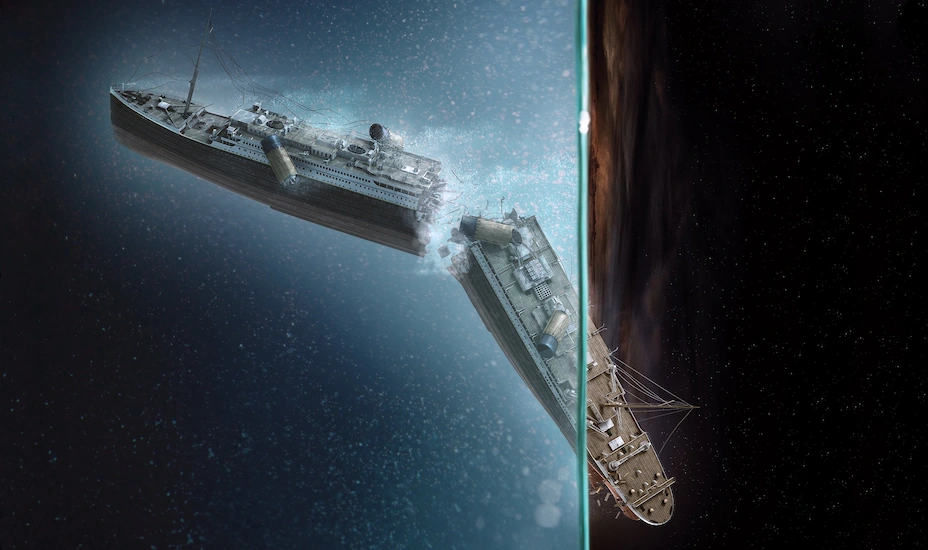The Story of the Titanic: What Really Happened on That Fateful Night
June 07, 2024
History Tragedy

The Titanic, the "unsinkable" ship, remains one of the most famous maritime disasters in history. The story of its tragic maiden voyage captures the imagination and highlights the human errors and overconfidence that led to its demise. In this blog, we will explore what happened on that fateful night in April 1912, examining the key events, decisions, and consequences that culminated in one of the deadliest maritime disasters.
The Titanic: A Marvel of Its Time
Construction and Design
The RMS Titanic was built by the White Star Line at the Harland and Wolff shipyard in Belfast, Northern Ireland. It was one of three Olympic-class ocean liners, designed to be the largest and most luxurious ships of their time. The Titanic was 882 feet long, 92 feet wide, and had a gross tonnage of 46,328 tons. It was equipped with advanced safety features, including watertight compartments and remotely activated watertight doors.
The "Unsinkable" Ship
The Titanic was touted as "unsinkable" due to its state-of-the-art design. The ship had 16 watertight compartments, and it was believed that it could stay afloat even if up to four of these compartments were breached. This overconfidence played a crucial role in the decisions made during the voyage.
The Maiden Voyage
Departure and Passengers
The Titanic set sail from Southampton, England, on April 10, 1912. It made stops in Cherbourg, France, and Queenstown (now Cobh), Ireland, before heading towards its final destination, New York City. Onboard were over 2,200 passengers and crew, including some of the wealthiest people of the time as well as immigrants seeking a new life in America.
Life on Board
Passengers enjoyed the height of luxury on the Titanic. First-class accommodations included lavish cabins, gourmet dining, and amenities like a swimming pool, gymnasium, and Turkish baths. Second and third-class accommodations were also relatively comfortable compared to other ships of the era.
The Iceberg and the Collision
Warnings Ignored
As the Titanic sailed through the North Atlantic, it received multiple warnings from other ships about icebergs in the area. Despite these warnings, the ship maintained a high speed of approximately 22 knots (about 25 mph). The prevailing belief in the ship's invincibility, combined with a desire to make a fast crossing, contributed to this decision.
The Fateful Night
On the night of April 14, 1912, the sea was calm, and the skies were clear. At 11:40 PM, the lookout Frederick Fleet spotted an iceberg directly ahead. He rang the warning bell and notified the bridge. First Officer William Murdoch ordered the ship to turn hard to port (left) and the engines to be reversed, but it was too late. The starboard (right) side of the ship scraped along the iceberg, creating a series of punctures below the waterline.
The Sinking
Assessing the Damage
The initial impact did not cause immediate alarm among many passengers. However, the damage assessment quickly revealed a grim situation. The iceberg had breached five of the ship's watertight compartments, more than the Titanic could withstand. The ship's designer, Thomas Andrews, informed Captain Edward Smith that the Titanic would sink within hours.
The Evacuation
The Titanic's crew began to launch lifeboats, but the process was chaotic and poorly managed. The ship had only 20 lifeboats, enough to accommodate about half of those onboard. Lifeboats were launched partially filled due to confusion and a lack of proper drills. The "women and children first" policy was inconsistently enforced, leading to a lower survival rate for men in third class.
Final Moments
As the bow of the ship sank deeper into the water, the stern lifted into the air. At around 2:20 AM on April 15, 1912, the Titanic broke apart and sank into the icy waters of the Atlantic. Over 1,500 people perished, either drowning or succumbing to hypothermia in the freezing ocean.
Aftermath and Legacy
Rescue Efforts
The RMS Carpathia, another passenger ship, arrived at the scene around 4 AM and rescued approximately 705 survivors from the lifeboats. The survivors were taken to New York City, where they were met with a mix of relief and mourning.
Investigations
In the wake of the disaster, inquiries were conducted by both the British and American governments. These investigations revealed numerous safety failures, including insufficient lifeboats, inadequate training for the crew, and the failure to heed ice warnings. The inquiries led to significant changes in maritime regulations, including the establishment of the International Ice Patrol and new requirements for lifeboat capacity and safety drills.
Cultural Impact
The sinking of the Titanic has had a lasting impact on popular culture. It has inspired countless books, movies, and documentaries. James Cameron's 1997 film "Titanic" brought the story to a new generation, emphasizing the human drama and tragedy of the event.
Lessons Learned
The Titanic disaster serves as a poignant reminder of the dangers of overconfidence and the importance of preparedness. It highlighted the need for better safety measures and the critical importance of respecting nature's power. The improvements in maritime safety regulations following the disaster have undoubtedly saved countless lives over the past century.
Conclusion
The story of the Titanic is one of human ambition, technological marvel, and tragic failure. The "unsinkable" ship's maiden voyage ended in disaster due to a combination of human error, overconfidence, and nature's unpredictability. The lessons learned from this tragedy have had a profound impact on maritime safety, ensuring that the mistakes of the past are not repeated. As we remember the Titanic and its passengers, we are reminded of the enduring need for vigilance and humility in the face of nature's vast and powerful forces.